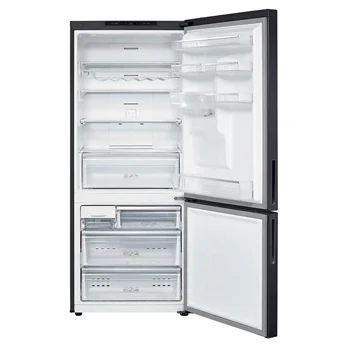Welcome to another detailed guide from TheKitchenApplianceDad.com. Today, we’re delving into a common issue many homeowners face with their refrigerators: a Samsung fridge that’s not cooling properly. It’s frustrating when you rely on your fridge to keep food fresh, only to find it warm and underperforming. Let’s explore the possible causes and solutions to get your Samsung refrigerator back in optimal condition.
Before troubleshooting, it’s essential to understand how your Samsung refrigerator operates. Refrigerators function by circulating cool air inside the compartments, which is managed by a series of components including the compressor, evaporator coils, condenser coils, and fans. Any malfunction in these parts can lead to cooling problems.
Check the power supply: Ensure your fridge is properly plugged in and that the outlet is functioning. You can test the outlet by plugging in another appliance to see if it works.
Adjust the thermostat: Sometimes, the fridge might be set to a warmer temperature accidentally. Check the thermostat settings and adjust them accordingly. Samsung refrigerators should typically be set between 37°F and 40°F.
Inspect and clear air vents: Blocked air vents can prevent the flow of cold air inside the fridge. Make sure there’s nothing blocking the air vents, such as food containers or accumulated ice.
Clean the condenser coils: Dirty condenser coils can’t release heat efficiently, which affects the cooling process. Clean these coils every six months to ensure optimal performance. You can find these coils at the back or beneath the fridge. Use a coil brush or vacuum to remove dust and debris.
Inspect the door seal (gasket): A loose or damaged door seal can let warm air inside the fridge, disrupting the internal temperature. Inspect the seal for any tears or gaps and replace it if necessary. You can test the seal’s effectiveness by closing the door on a dollar bill; if it pulls out easily, you might need a new seal.
Rearrange your fridge contents: An overpacked fridge can obstruct air circulation. Rearrange your food items to ensure there’s enough space for air to move freely.
Components that may fail: If the above fixes don’t resolve the issue, you might be dealing with a faulty component, such as the:
In these cases, it’s best to contact a professional technician for a thorough inspection and repair. Samsung offers a support page for troubleshooting that can also assist in these scenarios (Samsung Support).
To avoid future issues with your Samsung refrigerator not cooling, here are some preventative maintenance tips:
While many cooling issues can be resolved with simple checks and adjustments, some problems require professional expertise, especially when dealing with electronic controls or refrigerant issues. If your Samsung fridge is still under warranty, contacting Samsung for support or service might be the most cost-effective solution. Otherwise, consider hiring a certified appliance repair technician.
For more specific guidance, you might consider consulting the user manual for your specific Samsung fridge model. Manuals can often provide model-specific troubleshooting tips and maintenance advice. You can also visit forums and websites dedicated to Samsung appliance users for more personalized advice and solutions.
By understanding what causes a Samsung fridge not to cool and knowing how to troubleshoot these issues, you can save time and possibly avoid the expense of unnecessary repairs. Remember, regular maintenance is key to the longevity and efficiency of your appliance. Thank you for trusting TheKitchenApplianceDad.com for your home appliance solutions!

